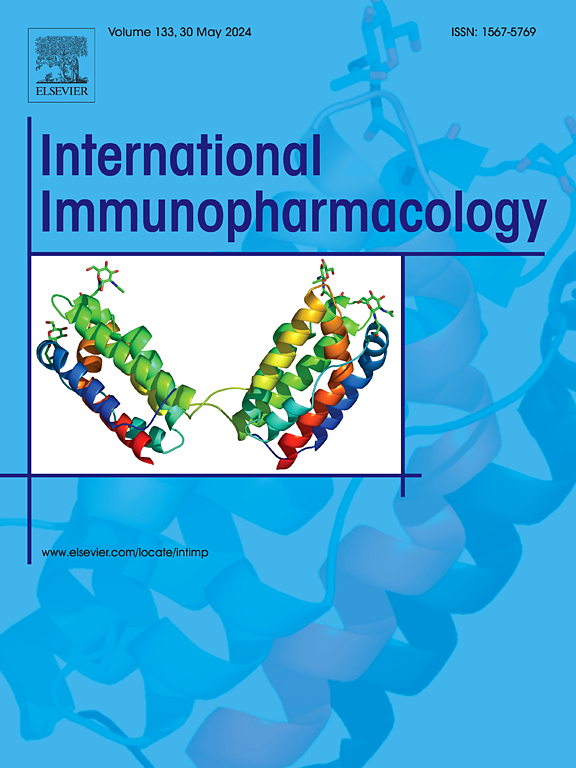Hepatic ischemia-reperfusion and mitochondrial quality control: potential therapeutic targets
IF 4.7
2区 医学
Q2 IMMUNOLOGY
引用次数: 0
Abstract
Background
Hepatic ischemia-reperfusion injury (HIRI) represents a significant challenge in liver surgical procedures. This complex pathology arises from the interplay of inflammation, oxidative damage, and regulated cell death cascades. Compromised mitochondrial function critically contributes to HIRI progression. Consequently, maintaining cellular equilibrium necessitates effective mitochondrial quality control (MQC), a fundamental axis encompassing mitochondrial autophagy, dynamic remodeling, biogenesis, and the mitochondrial unfolded protein response (UPRmt).
Key Mechanisms
Mitophagy: Selectively removes damaged mitochondria via PINK1/Parkin (ubiquitin-dependent) and BNIP3/FUNDC1 (ubiquitin-independent) pathways. Impaired mitophagy during ischemia-reperfusion exacerbates mitochondrial damage, while enhancing it (e.g., via PEG35, Sirtuin activators) mitigates injury.
Mitochondrial Dynamics: The stability of the mitochondrial network is critically dependent on the equilibrium between fusion, regulated by Mfn1, Mfn2, and Opa1, and fission, mediated by Drp1. HIRI disrupts this equilibrium, promoting fragmentation and apoptosis. Pharmacological agents (e.g., DEX, exogenous irisin) restore dynamics by modulating Drp1 and fusion proteins.
Biogenesis: The PGC-1α/NRF-1/TFAM axis drives mitochondrial renewal. HIRI suppresses biogenesis, but interventions (e.g., ADSC-exo, genipin) enhance ATP production and mitochondrial DNA replication.
Therapeutic Interventions
Pharmacological strategies targeting MQC components demonstrate efficacy:
Mitophagy: PEG35 enhances ALDH2-mediated LC3 conversion; quercetin regulates SIRT1/TMBIM6.
Dynamics: COX-2 inhibitors and SIRT3 deacetylate Opa1 to promote fusion.
Biogenesis: Irisin and NRF2 activators upregulate PGC-1α/TFAM, restoring mitochondrial mass.
Conclusion
MQC mechanisms are pivotal in HIRI pathogenesis. Targeting mitophagy, dynamics, and biogenesis offers promising therapeutic avenues to attenuate inflammation, oxidative stress, and cell death. Translational research on MQC modulators (e.g., PEG35, Sirt1 activators) may yield novel treatments.

肝缺血再灌注和线粒体质量控制:潜在的治疗靶点
肝缺血再灌注损伤(HIRI)是肝脏外科手术中的一个重大挑战。这种复杂的病理是由炎症、氧化损伤和调节细胞死亡级联的相互作用引起的。线粒体功能受损是HIRI进展的关键因素。因此,维持细胞平衡需要有效的线粒体质量控制(MQC),这是一个包含线粒体自噬、动态重塑、生物发生和线粒体未折叠蛋白反应(UPRmt)的基本轴。关键机制自噬:通过PINK1/Parkin(泛素依赖)和BNIP3/FUNDC1(泛素独立)途径选择性地去除受损的线粒体。缺血-再灌注期间线粒体自噬受损会加剧线粒体损伤,而增强线粒体自噬(例如通过PEG35、Sirtuin激活剂)可减轻损伤。线粒体动力学:线粒体网络的稳定性严重依赖于融合(由Mfn1、Mfn2和Opa1调节)和裂变(由Drp1介导)之间的平衡。HIRI破坏了这种平衡,促进碎片和细胞凋亡。药理学药物(如DEX、外源性鸢尾素)通过调节Drp1和融合蛋白来恢复动态。生物发生:PGC-1α/NRF-1/TFAM轴驱动线粒体更新。HIRI抑制生物发生,但干预(如ADSC-exo, genipin)增强ATP产生和线粒体DNA复制。靶向MQC成分的药理学策略证明了疗效:线粒体自噬:PEG35增强aldh2介导的LC3转化;槲皮素调节SIRT1/TMBIM6。动力学:COX-2抑制剂和SIRT3脱乙酰化Opa1促进融合。生物发生:鸢尾素和NRF2激活因子上调PGC-1α/TFAM,恢复线粒体质量。结论mqc机制在HIRI发病机制中起关键作用。靶向有丝分裂、动力学和生物发生为减轻炎症、氧化应激和细胞死亡提供了有希望的治疗途径。对MQC调节剂(如PEG35、Sirt1激活剂)的转化研究可能会产生新的治疗方法。
本文章由计算机程序翻译,如有差异,请以英文原文为准。
求助全文
约1分钟内获得全文
求助全文
来源期刊
CiteScore
8.40
自引率
3.60%
发文量
935
审稿时长
53 days
期刊介绍:
International Immunopharmacology is the primary vehicle for the publication of original research papers pertinent to the overlapping areas of immunology, pharmacology, cytokine biology, immunotherapy, immunopathology and immunotoxicology. Review articles that encompass these subjects are also welcome.
The subject material appropriate for submission includes:
• Clinical studies employing immunotherapy of any type including the use of: bacterial and chemical agents; thymic hormones, interferon, lymphokines, etc., in transplantation and diseases such as cancer, immunodeficiency, chronic infection and allergic, inflammatory or autoimmune disorders.
• Studies on the mechanisms of action of these agents for specific parameters of immune competence as well as the overall clinical state.
• Pre-clinical animal studies and in vitro studies on mechanisms of action with immunopotentiators, immunomodulators, immunoadjuvants and other pharmacological agents active on cells participating in immune or allergic responses.
• Pharmacological compounds, microbial products and toxicological agents that affect the lymphoid system, and their mechanisms of action.
• Agents that activate genes or modify transcription and translation within the immune response.
• Substances activated, generated, or released through immunologic or related pathways that are pharmacologically active.
• Production, function and regulation of cytokines and their receptors.
• Classical pharmacological studies on the effects of chemokines and bioactive factors released during immunological reactions.

 求助内容:
求助内容: 应助结果提醒方式:
应助结果提醒方式:


